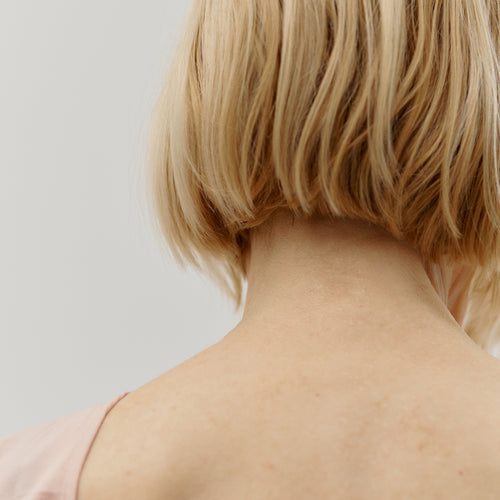
Laudation to Bitten Stetter at the iphiGenia Gender Design Award Evolution 2023
Gender design means looking at the areas where things can be uncomfortable, where old structures and patterns are observed and broken. This is where new approaches are developed that are intended to improve the situation for everyone involved.
I'm sitting next to the bed. In it, the person who taught me how to tie my shoes showed me that crossing a red light is only okay when there really aren't any cars in sight. This person had a plan, this person could provide answers. I'm sitting next to the bed. I'm sitting here and I don't know what to do. Waiting. Hoping and at the same time knowing that hoping isn't worth it. It's pushing, it's pulling, I'm overwhelmed. I'd love to... but I don't know how.
This is more or less what it can feel like to visit a hospice ward as a family member or caregiver. While we focus so much on life, birth, and new beginnings, we rarely focus on another change in every person's life: dying.
In her participatory field research in palliative care facilities, Bitten Stetter spoke with patients, caregivers, relatives, and physicians and discovered needs and gaps that she would like to address and close with her work.
When people lose strength and are under medical care, their scope for experiencing and acting shrinks to a few square meters in a limited physical space—a nursing bed, a bedside table. The view from a window or the ceiling often frames the person's visual horizon.
Who takes care of what no one wants to talk about? Who offers care?
We know about the gender care gap. We know about social pressure and societal gender role models. What does this mean for the care of people who are entitled to specialized care when there is no longer any hope of recovery? This important work takes place at home, in hospitals, nursing homes, or hospices.
The products developed by Bitten Stetter draw on analyses from on-site field observations and do not ignore gender, but rather address needs and requirements according to their relevance and then result in products that are designed with gender sensitivity in mind: The Care Cup, the Bed Box and the Travel Wear are extremely user-oriented with their simplicity, are partially customizable and, above all, are tailored to the conditions of a stay in a palliative care unit – thus promising a high level of inclusivity even in the daily work of the caregivers on site.
It's about touch and physical contact, which is literally cushioned by aids, and the spatial proximity to personal objects that foster autonomy and comfort. This also applies to the possibility of an individual room that provides privacy from the everyday hospital routine and bright light, while its materiality creates a warm and cozy retreat. Artifacts for incorporating personal mementos into the architecture of the palliative care room can be individually designed, and support objects for accompanying conversations with the dying are also offered in "finally"'s human-centered product design.
This working method and the results of Bitten Stetter's work enable an expanded way of thinking about the topics of dying and death and thus a change of perspective that opens up a new field of action for designers - finally.
From the jury's point of view, the work of Bitten Stetter and her label Final Studio succeeds in establishing a multimodal approach with interventions in which the well-being, autonomy and independence of people are protected on their final journey.
The iphiGenia Gender Design Award Evolution is awarded to established or emerging companies, agencies, or other initiatives that explicitly champion gender-sensitive design and whose work combines a holistic, compelling approach to this topic with excellence in design and execution. We are delighted to finally honor Bitten Stetter and her team with the iphiGenia Gender Design Award in the Evolution category for their work.
